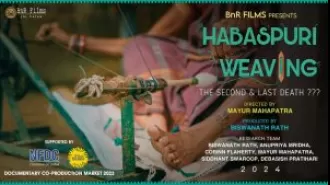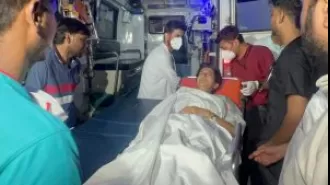Did students in Tennessee successfully capture a murderer?
Teen detectives set out to uncover the culprit of the 'redhead murders'.
August 26th 2024.

Teacher Alex Campbell had a unique challenge for his sociology class. He wanted them to delve into the unsolved case of the 'redhead murders'. However, he warned them not to get their hopes up too high and to be prepared for potential failure. After all, even with all the resources, expertise, and technology, law enforcement had been unable to catch the perpetrator. How could a group of high school students possibly solve the case?
The mystery that intrigued Alex and his students revolved around a series of unsolved attacks that took place in Tennessee and Kentucky between 1978 and 1992. It was a time when serial killers like Ted Bundy, the Zodiac Killer, and the East Area Rapist were striking fear into the hearts of women, making them afraid to go out alone at night. And amidst this fear, the bodies of ginger women were being discovered on the side of the road across the southern states. Despite the efforts of a specialized team of detectives known as the 'Redheaded Taskforce', the murderer remained at large. The lack of witnesses and the wide geographical area where the bodies were found made it a daunting case to solve.
The victims of the 'redhead murders' included 15-year-old Tracy Walker, 28-year-old Espy Pilgrim, 28-year-old Lisa Nichols, and 23-year-old Michelle Inman. These women, along with others, had fallen prey to a mysterious and elusive killer. The small town of Elizabethton, where the murders had occurred, was deeply affected by the unsolved murder of a redheaded teen named Cynthia Taylor in 1983. It was uncertain if her death was connected to the string of attacks, but it had left a mark on the community. This case piqued the interest of Alex, a true crime enthusiast, who saw it as an opportunity to engage his sociology students in a real-life case.
Alex introduced the concept of profiling to his class, which involved analyzing the psychological and behavioral characteristics of a person to predict their actions. He believed that by looking into the patterns and similarities among the murders, they could potentially identify the killer. The students, aged between 15 and 17, were immediately drawn to the project. With the help of a visiting FBI behavioral analyst named Scott Barker, they began to make progress in solving the elusive case that had baffled law enforcement for years.
Barker explained to the students that in order to establish a connection between the murders, they needed to identify four key aspects: timeframe, geography, modus operandi, and signature. With only newspaper clippings and the internet as their resources, the students analyzed dozens of victims and discovered that six of them fit a clear pattern. They were all women in their twenties and thirties, with red hair, who had been strangled and dumped on interstate highways across the region.
The state in which the bodies were found was disturbing and heart-wrenching. One victim was found naked in a refrigerator, another was a skeleton when she was discovered by a driver months after her disappearance, and a third was found beaten, strangled, and wrapped in a blanket over roadside railings. The students, who had dubbed the six victims as 'the six sisters', were able to identify five of them as Lisa Nichols, Michelle Inman, Tina Farmer, Elizabeth Lamotte, and Tracy Walker. The identity of the sixth victim remains unknown.
Through their research, the students also concluded that the killer was most likely a truck driver, targeting vulnerable women who wouldn't be reported missing. This theory was supported by psychologist Craig Jackson, who studies the links between crime and occupation. According to Jackson, murderers are often drawn to jobs that involve life on the road, as it allows them to carry out their heinous acts undetected. He also noted that since the 1980s, when the trucking industry became unregulated, smaller companies without satellite technology and tracking systems could enter the market, making it easier for criminals to evade capture.
Alex's project not only captured the attention of his students but also gained recognition outside of the classroom. It was featured in the popular true crime podcast, Murder 101, which documented the students' efforts to solve the 'redhead murders'. And now, it is being turned into a movie by Amazon MGM Studies, directed by Jon Watts, known for his work on Wolf and Spider-Man films. Alex's unique and engaging approach to teaching proved that even the most complex and daunting cases can be tackled with the right mindset and determination.
Teacher Alex Campbell had a unique challenge for his sociology class - to take on the unsolved case of ‘the redhead murders’. He didn't expect them to succeed, telling them to ‘prepare to fail’. After all, even the police with all their resources, expertise and technology couldn't catch the perpetrator, so how could a group of high school students?
The case in question was a series of unsolved attacks that occurred in Tennessee and Kentucky between 1978 and 1992. It was a time of terror for women, with infamous serial killers such as Ted Bundy, the Zodiac Killer, and the East Area Rapist on the loose. These murderers instilled fear in women, making them afraid to go out alone at night.
The bodies of ginger women were found decomposed by the side of the road across the southern states, leaving the ‘Redheaded Taskforce’ - a team of skilled detectives from the South - stumped. With no witnesses and the bodies found over a vast area, often long after the victim's death, the taskforce couldn't make any progress.
The victims of the ‘redhead murders’ included 15-year-old Tracy Walker, 28-year-old Espy Pilgrim, 28-year-old Lisa Nichols, and 23-year-old Michelle Inman. These women tragically lost their lives in similar circumstances. But the small town of Elizabethton, known for its strong sense of community, was most affected by the murder of redheaded teenager Cynthia Taylor in 1983. It was unclear if her death was connected to the other attacks, but Alex, an avid true crime fan, wanted to find out more.
In January 2018, Alex brought the case to his students at Elizabethton High School, hoping to engage them in their sociology classes. Little did he know that their investigation would lead to the creation of a popular true crime podcast and a movie by Amazon MGM Studios, directed by Jon Watts of Wolfs and Spider-Man fame.
Alex explains on the podcast, "I became intrigued by [the murders] and thought it would be a great project for the next semester. I noticed that my students were always fascinated whenever we talked about serial killers or psychopaths. They paid more attention and wanted to learn." So, he introduced the concept of profiling to his class, which involves analyzing a person's psychological and behavioral characteristics to predict their actions. "I thought we could do a unit on serial killers and profiling and see if we could find any connections to these murders," he added.
The students, aged between 15 and 17, became deeply invested in the project. With the help of FBI behavioral analyst Scott Barker, they made significant progress in solving the mystery that had baffled officers for years. Barker advised the students to look for four key aspects to confirm a connection - timeframe, geography, modus operandi, and a signature. Using newspaper clippings and the internet, the students analyzed dozens of victims and found that six of them fit a clear pattern - they were women in their twenties and thirties with red hair, who were strangled to death and dumped along interstate highways in the region.
The state in which the victims were found was heart-wrenching. One of them was found naked in a refrigerator, another was discovered as a skeleton months after going missing, and a third was found beaten, strangled, and wrapped in a blanket over roadside railings. Five of the victims, who the class referred to as ‘the six sisters’, were previously unidentified but have since been named as Lisa Nichols, Michelle Inman, Tina Farmer, Elizabeth Lamotte, and Tracy Walker. However, one victim remains unknown.
Through their findings, the students concluded that the killer was most likely a truck driver who targeted vulnerable women, knowing they wouldn't be reported missing. This theory aligns with a common trope in crime - the killer trucker. According to psychologist Craig Jackson, from Birmingham City University, murderers are often drawn to jobs that involve a lot of travel, allowing them to get away with their heinous crimes. He explains, "The FBI have recorded 850 bodies that can be attributed to people who drive as a living in the US. Since the 1980s, when haulage became unregulated, smaller trucking companies without satellite technology and tracking could enter the market."
The mystery that intrigued Alex and his students revolved around a series of unsolved attacks that took place in Tennessee and Kentucky between 1978 and 1992. It was a time when serial killers like Ted Bundy, the Zodiac Killer, and the East Area Rapist were striking fear into the hearts of women, making them afraid to go out alone at night. And amidst this fear, the bodies of ginger women were being discovered on the side of the road across the southern states. Despite the efforts of a specialized team of detectives known as the 'Redheaded Taskforce', the murderer remained at large. The lack of witnesses and the wide geographical area where the bodies were found made it a daunting case to solve.
The victims of the 'redhead murders' included 15-year-old Tracy Walker, 28-year-old Espy Pilgrim, 28-year-old Lisa Nichols, and 23-year-old Michelle Inman. These women, along with others, had fallen prey to a mysterious and elusive killer. The small town of Elizabethton, where the murders had occurred, was deeply affected by the unsolved murder of a redheaded teen named Cynthia Taylor in 1983. It was uncertain if her death was connected to the string of attacks, but it had left a mark on the community. This case piqued the interest of Alex, a true crime enthusiast, who saw it as an opportunity to engage his sociology students in a real-life case.
Alex introduced the concept of profiling to his class, which involved analyzing the psychological and behavioral characteristics of a person to predict their actions. He believed that by looking into the patterns and similarities among the murders, they could potentially identify the killer. The students, aged between 15 and 17, were immediately drawn to the project. With the help of a visiting FBI behavioral analyst named Scott Barker, they began to make progress in solving the elusive case that had baffled law enforcement for years.
Barker explained to the students that in order to establish a connection between the murders, they needed to identify four key aspects: timeframe, geography, modus operandi, and signature. With only newspaper clippings and the internet as their resources, the students analyzed dozens of victims and discovered that six of them fit a clear pattern. They were all women in their twenties and thirties, with red hair, who had been strangled and dumped on interstate highways across the region.
The state in which the bodies were found was disturbing and heart-wrenching. One victim was found naked in a refrigerator, another was a skeleton when she was discovered by a driver months after her disappearance, and a third was found beaten, strangled, and wrapped in a blanket over roadside railings. The students, who had dubbed the six victims as 'the six sisters', were able to identify five of them as Lisa Nichols, Michelle Inman, Tina Farmer, Elizabeth Lamotte, and Tracy Walker. The identity of the sixth victim remains unknown.
Through their research, the students also concluded that the killer was most likely a truck driver, targeting vulnerable women who wouldn't be reported missing. This theory was supported by psychologist Craig Jackson, who studies the links between crime and occupation. According to Jackson, murderers are often drawn to jobs that involve life on the road, as it allows them to carry out their heinous acts undetected. He also noted that since the 1980s, when the trucking industry became unregulated, smaller companies without satellite technology and tracking systems could enter the market, making it easier for criminals to evade capture.
Alex's project not only captured the attention of his students but also gained recognition outside of the classroom. It was featured in the popular true crime podcast, Murder 101, which documented the students' efforts to solve the 'redhead murders'. And now, it is being turned into a movie by Amazon MGM Studies, directed by Jon Watts, known for his work on Wolf and Spider-Man films. Alex's unique and engaging approach to teaching proved that even the most complex and daunting cases can be tackled with the right mindset and determination.
Teacher Alex Campbell had a unique challenge for his sociology class - to take on the unsolved case of ‘the redhead murders’. He didn't expect them to succeed, telling them to ‘prepare to fail’. After all, even the police with all their resources, expertise and technology couldn't catch the perpetrator, so how could a group of high school students?
The case in question was a series of unsolved attacks that occurred in Tennessee and Kentucky between 1978 and 1992. It was a time of terror for women, with infamous serial killers such as Ted Bundy, the Zodiac Killer, and the East Area Rapist on the loose. These murderers instilled fear in women, making them afraid to go out alone at night.
The bodies of ginger women were found decomposed by the side of the road across the southern states, leaving the ‘Redheaded Taskforce’ - a team of skilled detectives from the South - stumped. With no witnesses and the bodies found over a vast area, often long after the victim's death, the taskforce couldn't make any progress.
The victims of the ‘redhead murders’ included 15-year-old Tracy Walker, 28-year-old Espy Pilgrim, 28-year-old Lisa Nichols, and 23-year-old Michelle Inman. These women tragically lost their lives in similar circumstances. But the small town of Elizabethton, known for its strong sense of community, was most affected by the murder of redheaded teenager Cynthia Taylor in 1983. It was unclear if her death was connected to the other attacks, but Alex, an avid true crime fan, wanted to find out more.
In January 2018, Alex brought the case to his students at Elizabethton High School, hoping to engage them in their sociology classes. Little did he know that their investigation would lead to the creation of a popular true crime podcast and a movie by Amazon MGM Studios, directed by Jon Watts of Wolfs and Spider-Man fame.
Alex explains on the podcast, "I became intrigued by [the murders] and thought it would be a great project for the next semester. I noticed that my students were always fascinated whenever we talked about serial killers or psychopaths. They paid more attention and wanted to learn." So, he introduced the concept of profiling to his class, which involves analyzing a person's psychological and behavioral characteristics to predict their actions. "I thought we could do a unit on serial killers and profiling and see if we could find any connections to these murders," he added.
The students, aged between 15 and 17, became deeply invested in the project. With the help of FBI behavioral analyst Scott Barker, they made significant progress in solving the mystery that had baffled officers for years. Barker advised the students to look for four key aspects to confirm a connection - timeframe, geography, modus operandi, and a signature. Using newspaper clippings and the internet, the students analyzed dozens of victims and found that six of them fit a clear pattern - they were women in their twenties and thirties with red hair, who were strangled to death and dumped along interstate highways in the region.
The state in which the victims were found was heart-wrenching. One of them was found naked in a refrigerator, another was discovered as a skeleton months after going missing, and a third was found beaten, strangled, and wrapped in a blanket over roadside railings. Five of the victims, who the class referred to as ‘the six sisters’, were previously unidentified but have since been named as Lisa Nichols, Michelle Inman, Tina Farmer, Elizabeth Lamotte, and Tracy Walker. However, one victim remains unknown.
Through their findings, the students concluded that the killer was most likely a truck driver who targeted vulnerable women, knowing they wouldn't be reported missing. This theory aligns with a common trope in crime - the killer trucker. According to psychologist Craig Jackson, from Birmingham City University, murderers are often drawn to jobs that involve a lot of travel, allowing them to get away with their heinous crimes. He explains, "The FBI have recorded 850 bodies that can be attributed to people who drive as a living in the US. Since the 1980s, when haulage became unregulated, smaller trucking companies without satellite technology and tracking could enter the market."
[This article has been trending online recently and has been generated with AI. Your feed is customized.]
[Generative AI is experimental.]
0
0
Submit Comment





